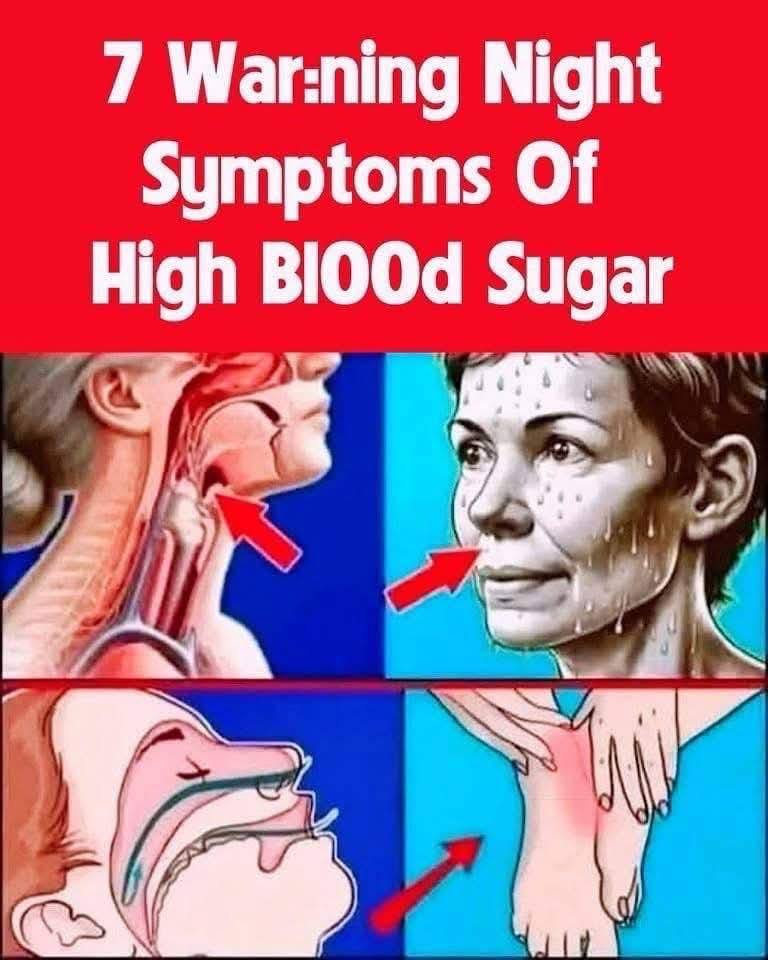High blood sugar, also known as hyperglycemia, is a condition most commonly associated with diabetes and occurs when the glucose level in the blood rises above normal thresholds. The World Health Organization defines hyperglycemia as having a fasting blood sugar level higher than 7.0 mmol/L (126 mg/dL) or a level greater than 11.0 mmol/L (200 mg/dL) two hours after eating.

This condition typically results from either the pancreas not producing enough insulin or the body developing resistance to insulin, both of which are key mechanisms in diabetes. Recognizing the early warning signs of high blood sugar can be crucial in managing the condition and preventing more serious complications down the road. One of the first and most noticeable symptoms is constant thirst. This happens because the kidneys are working overtime to get rid of excess sugar in the bloodstream, and they do so by pulling fluid from body tissues and flushing it out through increased urination.
This loss of fluid leads to dehydration, making the person feel unusually thirsty all the time. Along with frequent thirst comes increased urination, which often occurs both during the day and at night. Another key sign is an increase in appetite. Even though the person is eating enough, the body struggles to convert the food into energy because insulin isn’t functioning properly. The sugar stays in the blood instead of entering the cells, leaving them starved for energy. As a result, the brain interprets this as hunger, which causes the person to eat more, sometimes excessively. Individuals with high blood sugar may also develop small bumps on their skin, a condition known as eruptive xanthomatosis. These bumps are typically the result of elevated triglyceride levels, which are common in people with poor glucose control. They may appear as small, yellowish pimples, often on the back, arms, or legs, and can be itchy or tender to the touch.
Chronic fatigue is another symptom that is frequently reported. Since glucose is not effectively entering cells, the body lacks the energy it needs to function properly. This leads to ongoing tiredness and a general feeling of exhaustion, even if the person is getting enough sleep. Another common but sometimes overlooked sign is blurry vision and frequent headaches. Elevated blood sugar can cause the lenses of the eyes to swell due to fluid buildup, which affects the ability to focus clearly.
This swelling can also lead to increased pressure inside the head, resulting in headaches that interfere with concentration and daily activities. Additionally, when high blood sugar levels persist for a long period of time, they can begin to damage the nerves, leading to a condition called diabetic neuropathy. Early symptoms include tingling, numbness, or a pins-and-needles sensation, particularly in the hands and feet. This nerve damage can become permanent if left untreated, which is why early detection and management are essential. One lesser-known but visible sign of high blood sugar is the appearance of skin tags. These small, benign growths can show up almost anywhere on the body but are most commonly found in skin folds such as the neck, underarms, and groin. While skin tags are generally harmless, their presence, especially in clusters, can be an indicator of elevated blood sugar or insulin resistance. All of these symptoms, when taken together, can help provide an early warning that blood sugar levels are out of control. Ignoring them can lead to more severe complications such as vision loss, nerve damage, kidney problems, and even cardiovascular disease. Therefore, being aware of and attentive to these early signs is important for anyone at risk of diabetes or already living with the condition. Monitoring your blood sugar regularly, maintaining a healthy diet, staying active, and following your healthcare provider’s recommendations are critical steps in keeping your glucose levels in check and preventing long-term damage.





